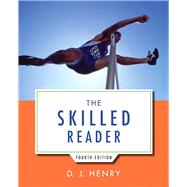The Skilled Reader combines solid skill instruction with a wealth of guided practice to develop the quintessential abilities students need to become skilled readers and critical thinkers.
The author integrates reading skills with the reading process (SQ3R) to produce more effective readers and lead students to discover the power and pleasure of reading. Providing step-by-step reading instruction, a wide range of practice and test materials, and a rich selection of readings from textbooks and other sources, the author makes students responsible for their reading — improving their major reading skills while developing a system for reading.








